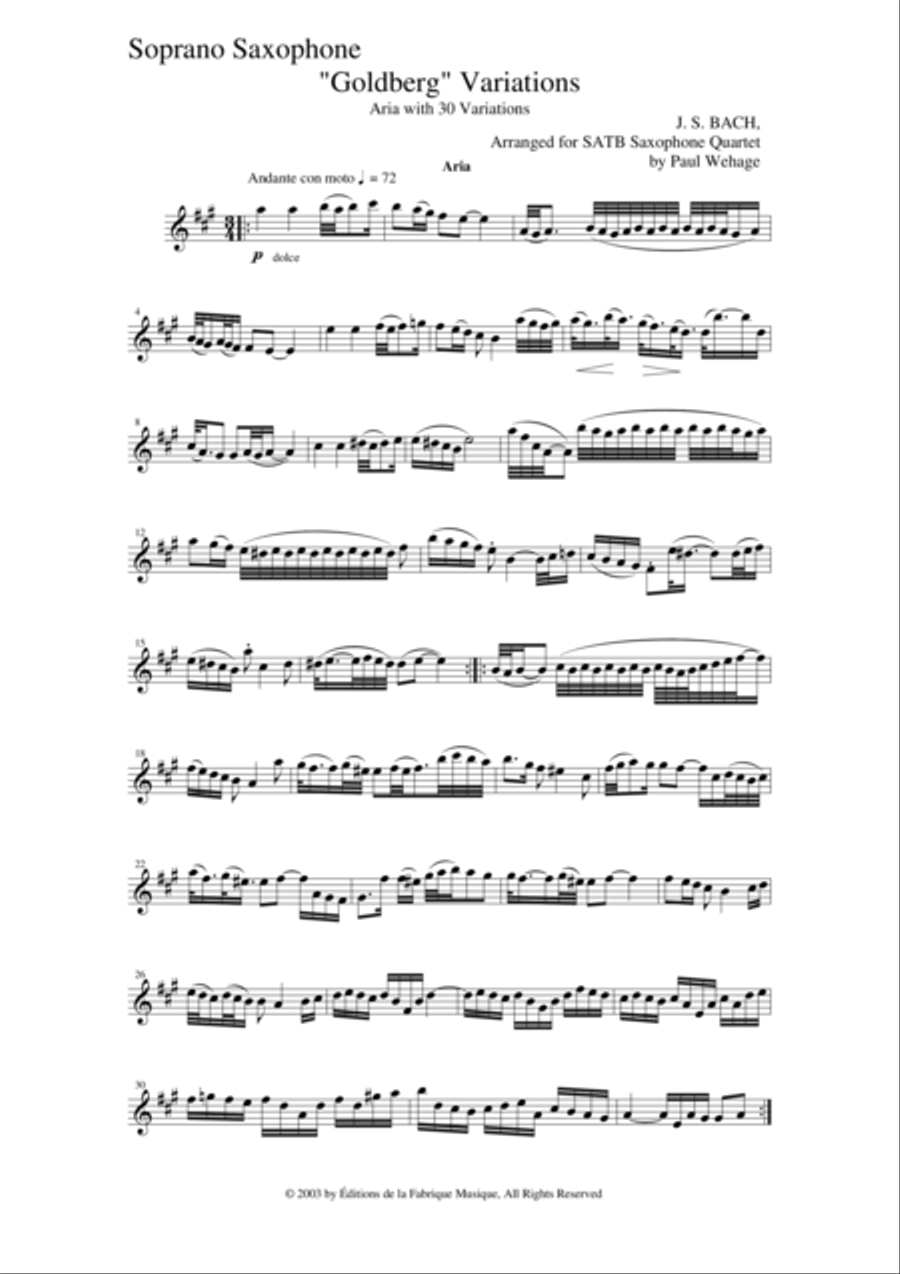Woodwind Ensemble,Woodwind Quartet Alto Saxophone,Baritone Saxophone,Soprano Saxophone,Tenor Saxophone - Level 4 - Digital Download SKU: A0.532735 Composed by Johann Sebastian Bach. Arranged by Paul Wehage. Baroque,Standards. 24 pages. Musik Fabrik Music Publishing #1921. Published by Musik Fabrik Music Publishing (A0.532735). The Aria with 30 variations which form the work which is known as the « Goldberg » variations is one of the greatest works of Bach. It is his only work which uses the form of variations and through three series of ten variations each, it explores a myriad of musical genres and styles. The initial Aria, which seems to be rather trite and banal at the beginning of the work, is magnified through these transformations and the da capo at the end brings us back to the beginning, which has been changed by the musical journey itself. As a sort of musical « initiation », it has become a work which sparks the imagination and which creates an atmosphere all it’s own. The story of how the work came to be written has to come to us through Bach’s first biographer, Johann Nikolaus Forkel in 1805, seventy-five years after the death of Bach. It would seem that a certain Count Keyserlingk, the Russian Ambassador to the Court of Dresden, had difficulty sleeping and asked Bach to compose a work which his protégé, a harpsichord virtuoso by the name of Goldberg, could play in a salon near his bedroom to help him sleep in the evening. For this commission, Bach was to receive the largest fee of his life, a hundred louis d’or in a golden goblet. It would seem that this story is perhaps more of a legend than anything else, as no goblet was found in Bach’s estate at the end of his life and no documented proof of this story has been found. Goldberg was indeed a student of C. P. E Bach, Bach’s son and the son might have asked his father to write these works for his brilliant student. No manuscript for the Goldberg Variations exists, only a first edition corrected in the hand of Bach which contains certain tempo indications and other markings. The first edition also carried the following title: « Clavierübung, consisting of an Aria with diverse variations for the Harpsichord with two manuals composed for music lovers to refresh their spirits by J. S. Bach ». In this version for Saxophone Quartet, it is important to remember that Bach was writing for the harpsichord and not for the Piano-forte. Bach did indeed know of the Piano-forte and played one of the first instruments produced, but it would seem that he did not care much for this new instrument. To find something akin to the precise, clearly defined attacks of the harpsichord, precise articulation and clarity of sound must be the first priority. In general, even in the slowest movements, the attacks must take precedent over all other elements of performance. If the need for clarity of line and precision of attack is respected, the inherent musicality contained in the work should be evident, even in this new form.. As Bach himself transcribed many of his own works and those of others, I would like to hope that he would find this question to be interesting and the results to be surprising...
